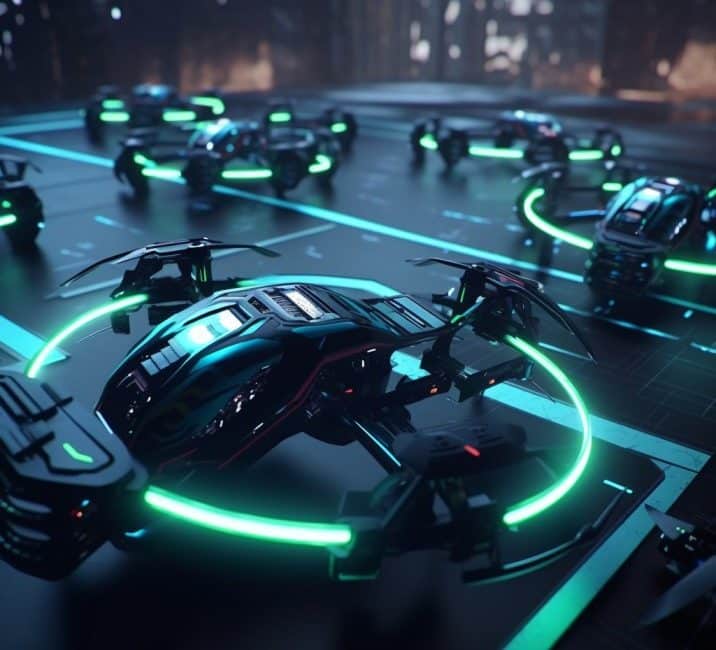Drone racing has quickly gained popularity as an exhilarating and adrenaline-fueled sport. In this article, we will take a closer look at the world of professional drone racing, exploring the equipment, rules, and the thrill of this exciting sport.
- Equipment: Drone racing involves the use of small, agile, and high-speed professional drones that are specifically designed for racing. These professional drones are typically equipped with cameras that provide a first-person view (FPV) to the pilot. The pilots wear FPV goggles, which allow them to see the live video feed from the drone’s camera, giving them a thrilling and immersive racing experience.
- Racing Courses: Drone racing takes place on specially designed courses that include various obstacles such as gates, flags, and obstacles that challenge the pilot’s skills. The courses can be set up indoors or outdoors, and they often feature intricate designs to test the pilots’ agility, speed, and maneuvering abilities.
- Pilots and Skillset: Drone racing requires pilots with excellent hand-eye coordination, quick reflexes, and precise control over their professional drones. Pilots need to navigate the racing course while maneuvering through tight spaces, performing daring maneuvers, and maintaining high speeds. The ability to make split-second decisions and adjust flight paths is crucial to success in this sport.
- Competitive Formats: Drone racing competitions can take various formats. One popular format is time trials, where pilots aim to complete the course in the shortest time possible. Another format is head-to-head racing, where multiple professional drones compete simultaneously, and the first drone to complete the course wins. Races can be organized as single events or as part of larger competitions and leagues.
- Safety Measures: Safety is a top priority in professional drone racing. Pilots must adhere to strict safety guidelines, including maintaining a safe distance from spectators and following designated flight paths. Additionally, race organizers implement safety measures such as netting or barriers to ensure the drones do not pose a risk to participants or the audience.
- Spectator Experience: Drone racing provides an immersive and thrilling experience for both pilots and spectators. Spectators can watch the race on large screens that display the live footage from the professional drones’ cameras. The fast-paced action, tight turns, and thrilling maneuvers create a visually captivating and exciting spectacle for the audience.
- Growth and Community: Drone racing has gained a passionate and dedicated community of pilots, enthusiasts, and fans. The sport has seen significant growth with organized competitions, leagues, and even international championships. Drone racing events often attract large crowds and generate a sense of camaraderie among participants and spectators.
Drone racing is an electrifying sport that combines technology, skill, and excitement. With its unique equipment, challenging courses, competitive formats, and dedicated community, drone racing offers an unforgettable experience for both pilots and spectators. As the sport continues to evolve and gain popularity, we can expect even more thrilling races and advancements in drone technology, making it an exciting sport to watch and participate in.





